What is Cubism?
Cubism is a revolutionary art movement which originated in the early 20th century. It challenged the norms of representation in art by displaying the subject as fragmented forms with multiple viewpoints. Cubist painters present a new reality in paintings where traditional perspective is replaced with abstract, layered compositions.
Mood Board
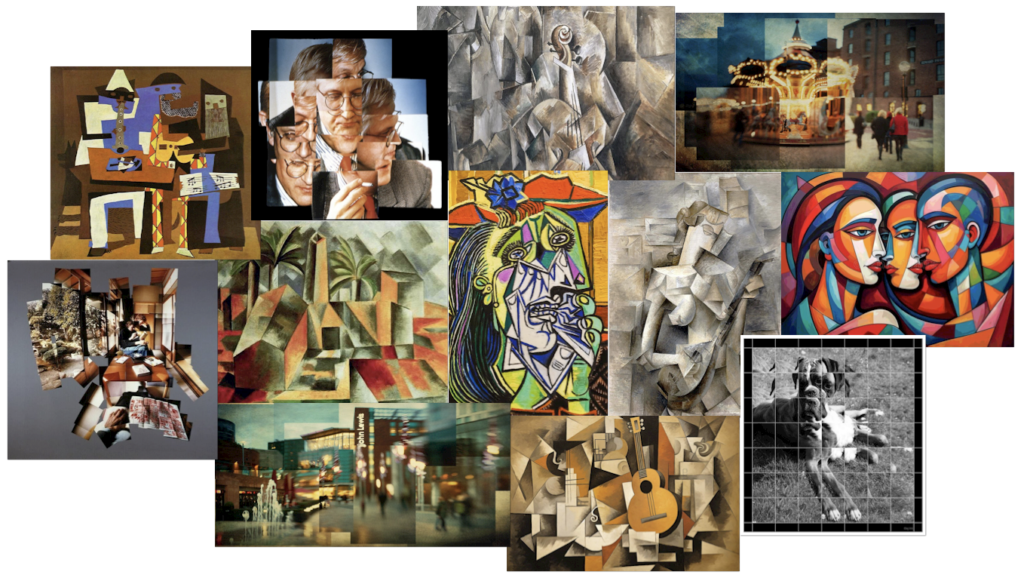
History of Cubism
Cubism was created by Pablo Picasso and Georges Braque in Paris between 1907 and 1914.

Picasso was a Spanish artist who lived most of his adult life in France. He experimented with many different artistic styles and techniques, making him renowned for consistently reinventing himself. Art critics and historians typically split Picasso’s career into distinct periods.
The first period of Picasso’s career, lasting from 1901 to 1904, was his ‘Blue Period’. During this period, Picasso’s art pieces were primarily shades of blue with touches of accent colour. The subdued tones of these paintings are considered as a reflection of Picasso’s depression following a close friend’s passing.
Subsequent to Picasso’s ‘Blue Period’ was his ‘Rose Period’. This period lasted from 1904 through to 1906 and it signified a shift in Picasso’s wellbeing due to the introduction of warmer colours. These colours included pinks, beiges and reds.
From 1907 to 1909, Picasso’s art was highly inspired by angular African art and masks. This period saw the creation of one of his most controversial pieces, ‘Les Demoiselles d’Avignon’. After meeting Georges Braque in 1905, the artists worked closely together, agreeing on each other’s finished work. In 1907 Picasso showed Braque this painting which was considered as the first Cubist painting.
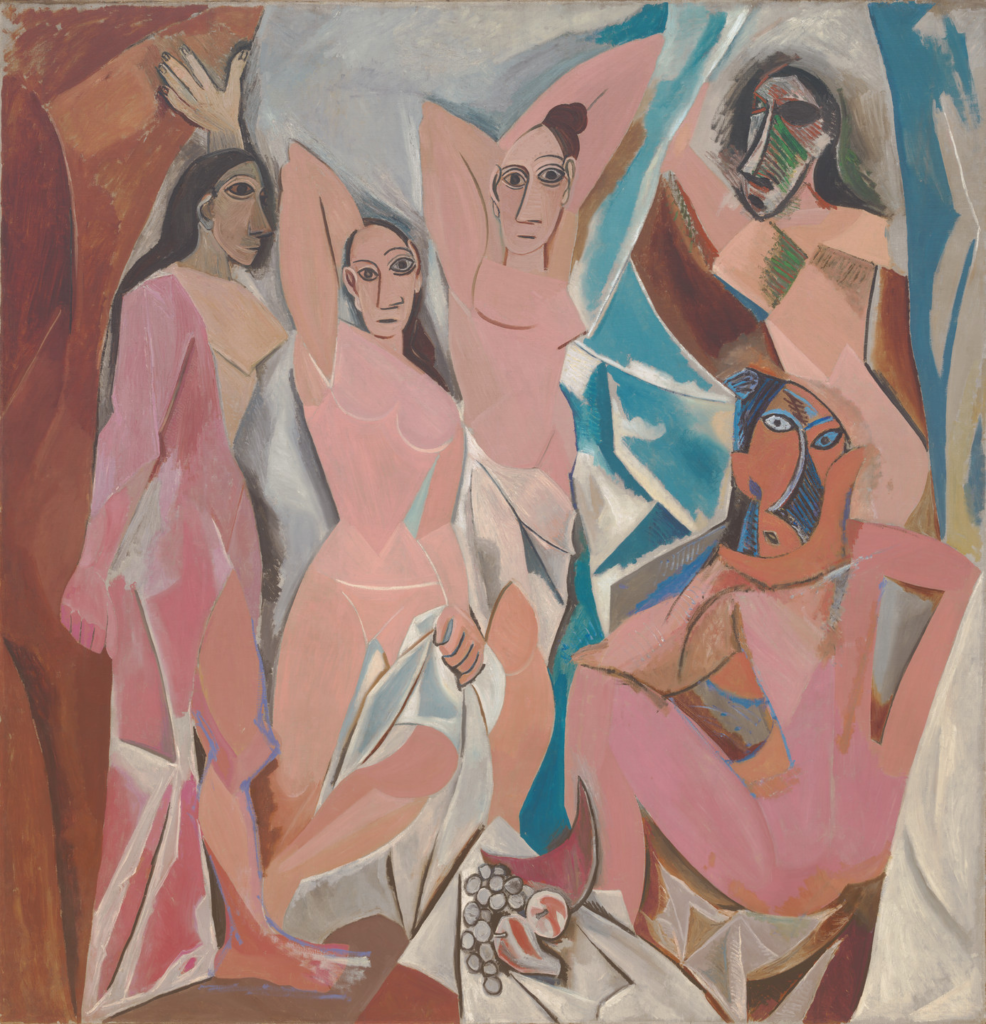
‘Les Demoiselles d’Avignon’ depicts 5 nude prostitutes from Avignon Street in Barcelona. The features of each of these women are depicted with angular lines and geometric/cubic shapes, appearing almost too sharp to touch. The details of their faces were influenced by African masks and carvings, alike many other pieces by Picasso at the time. It wasn’t until 1916 that Picasso decided to display this painting to the public.
In 1908, Braque responded to Picasso’s work and created the ‘Large Nude’, establishing the birth of cubism.
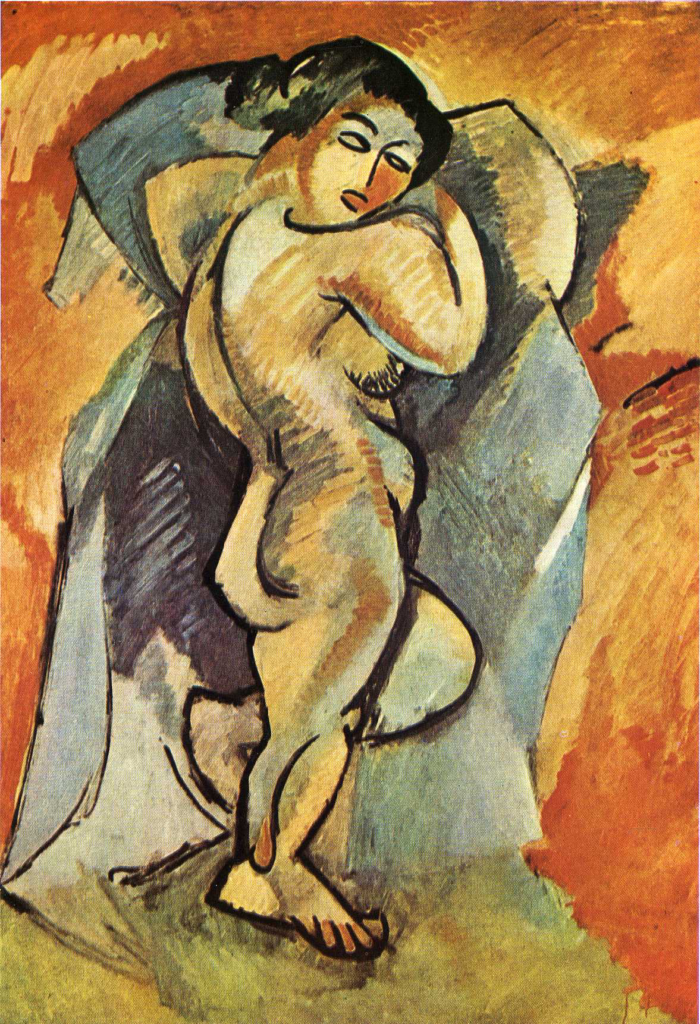
This was an oil on canvas painting by Georges Braque, depicting a nude female whose body has been formed by layers of geometric fragments and sharp lines. This piece was the earliest type of Cubism, known as Analytical Cubism.
Analytical Cubism is characterised by the subject being split into multi-layered, angular surfaces rather than being depicted realistically. The colours in Analytical Cubism are often very dull, mostly brown, grey and yellow tones. Here are some other images of Analytical Cubism:
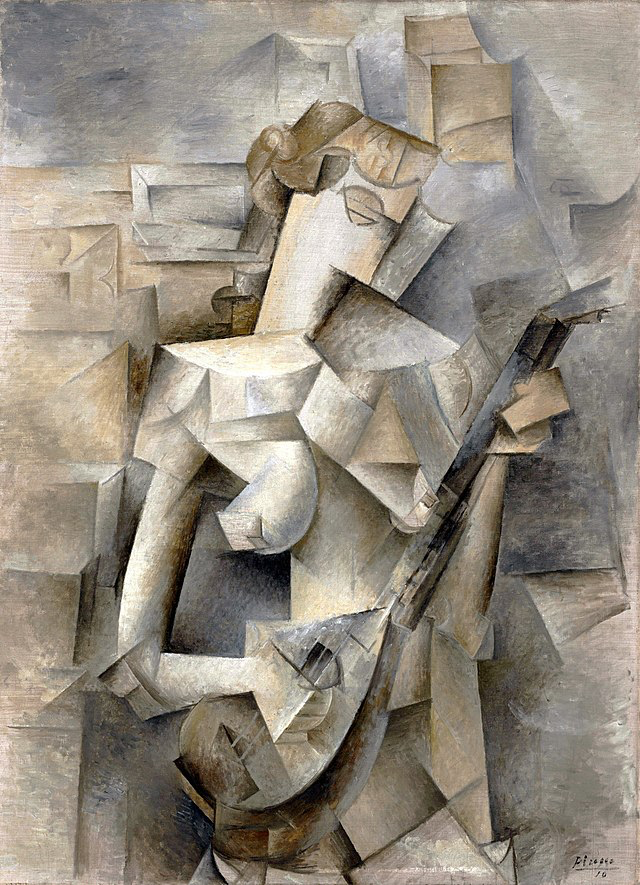


Georges Braque was the reason why Cubism became such a huge art movement. This is due to his canvas series named ‘Houses at L’Estaque‘. Braque was highly influenced by an artist named Paul Cezanne. This is evident in this series through Braque’s use of geometric shapes and colourful slanted surfaces. Paul Cezanne was best known for his Impressionist work, however, his approach to painting was what inspired Cubism as a whole. Picasso and Cezanne were both inspired by the way in which Cezanne would focus on the shapes and colours of objects in his paintings, rather than their details. He would also break objects into different perspectives to highlight their form and structure. Additionally, Picasso once stated that Cezanne was “the father of us all“. This was because Paul Cezanne was a very influential painter, especially with Cubism.
Below you can see images of artwork by both Georges Braque and Paul Cezanne:
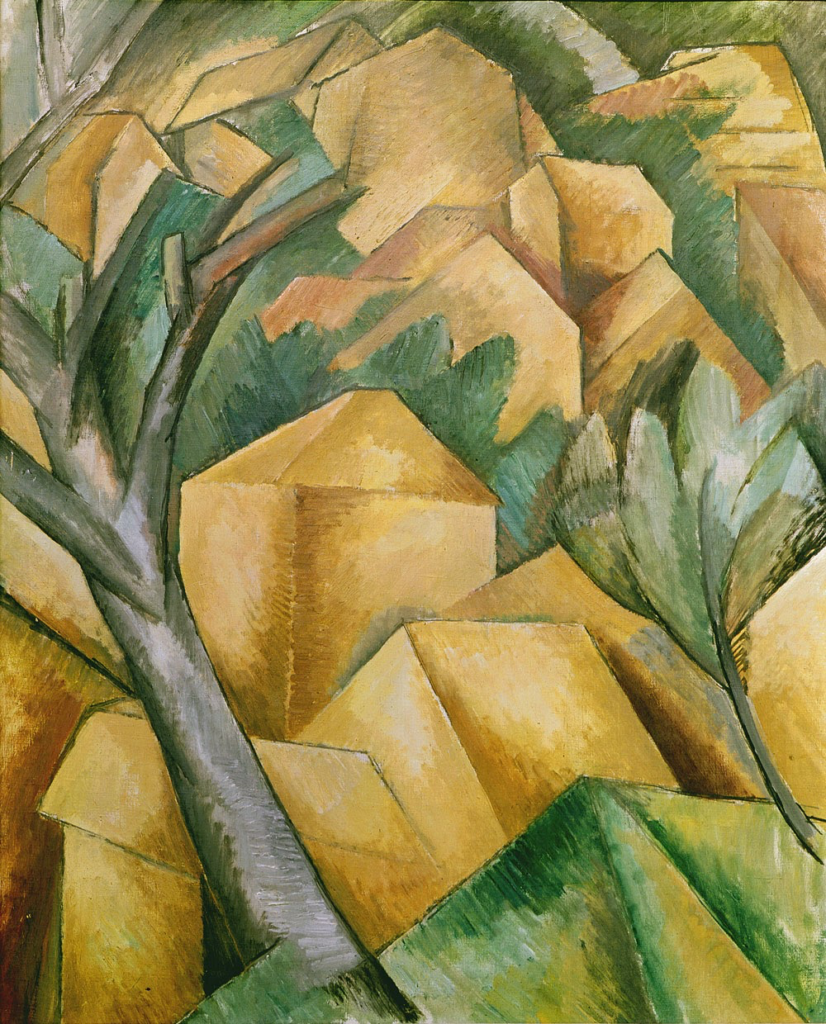
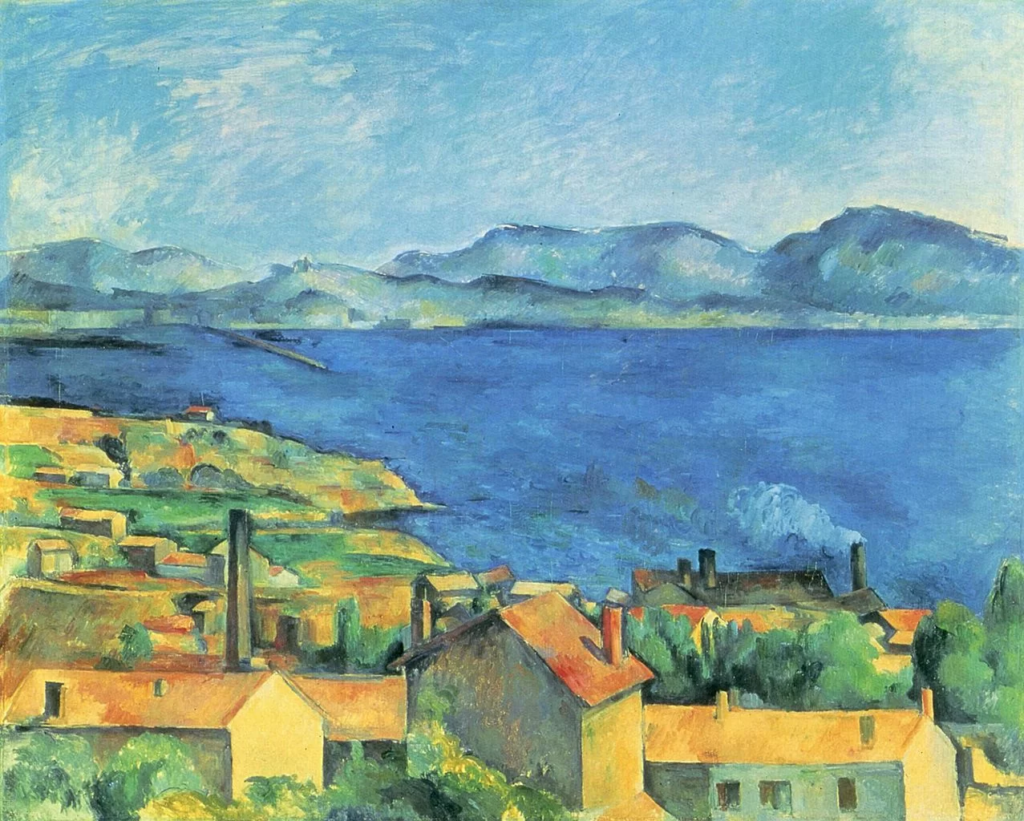
By looking at these two paintings together, you can see Cezanne’s influence on Braque through his use of colour, yellow and green, and how the building’s in Braque’s painting are broken into geometric shapes with no details.
The term ‘Cubism’ was first used to describe this art form by French critic Louis Vauxcelles in 1908. He used this term when describing Braque’s landscape paintings. In 1911, the press adopted this term and it became widely used to describe the art form.
The interest in Cubism continued to grow in popularity and a new style of Cubism developed. This was called Synthetic Cubism which consisted of simpler shapes and brighter colours than Analytical Cubism. It also often includes real-world materials such as news paper and patterned paper.
Here are some images of Synthetic Cubism:

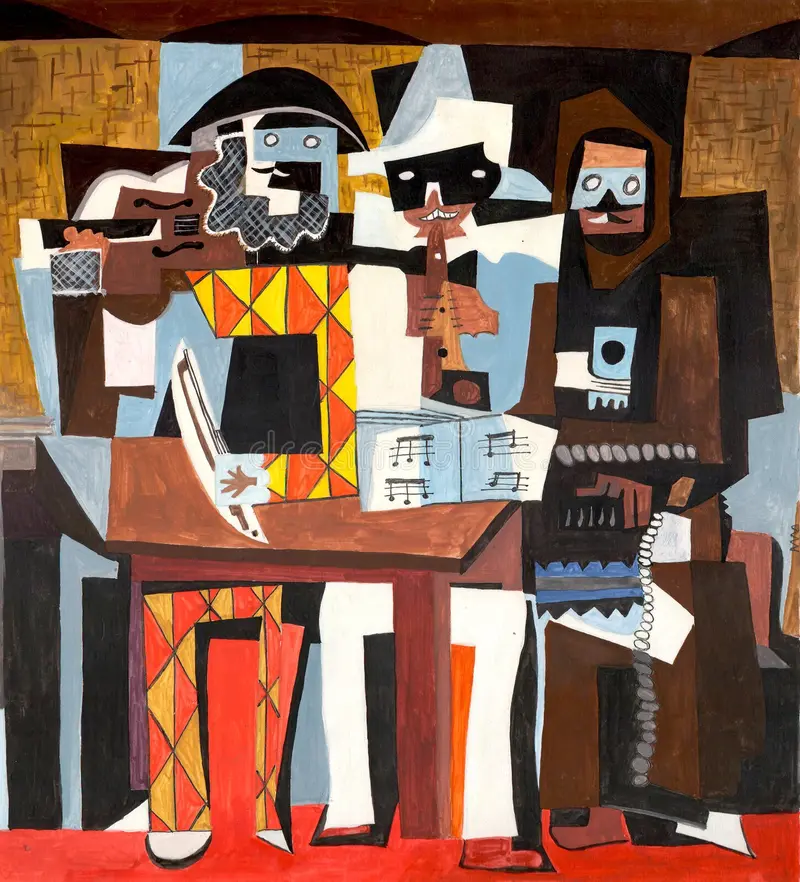
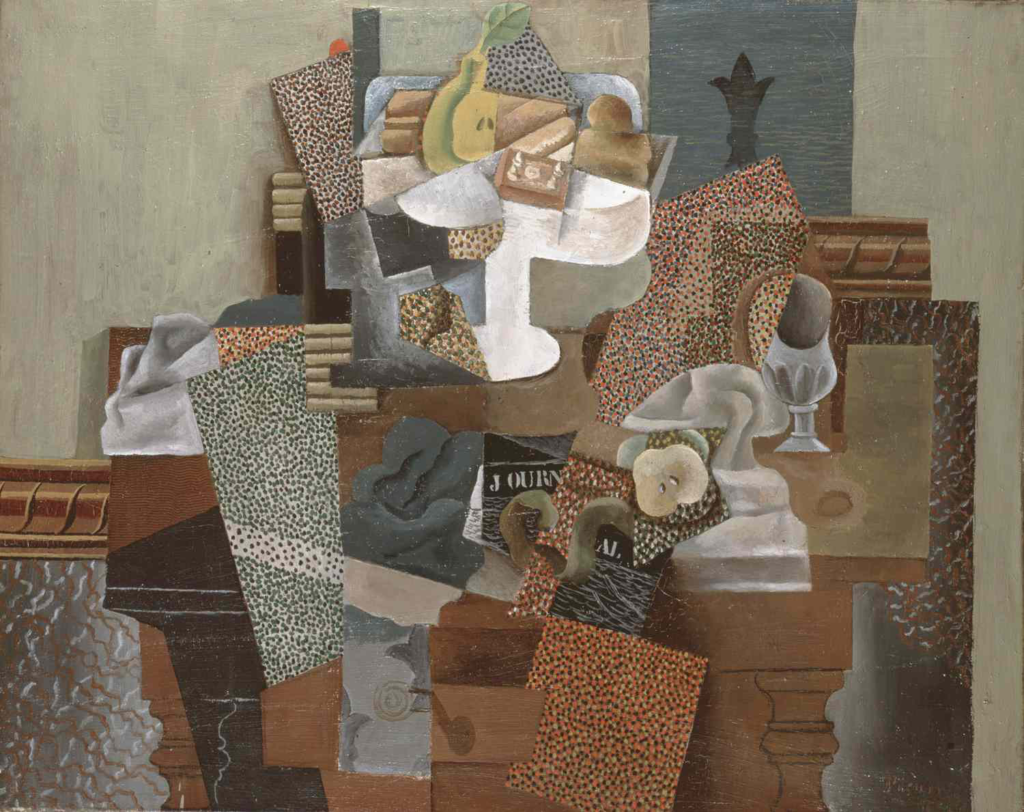
Cubism in Art
Some other influential cubist artists included Jean Metzinger and Juan Gris.
Jean Metzinger
Jean Metzinger was a French painter who had lots of involvement with Cubism. He would write articles about contemporary painting and, in 1910, he wrote an article about the work of Braque and Picasso stating that they ‘had dismissed traditional perspective and merged multiple views of an object in a single image‘, according to Guggenheim.org. In 1912, Jean Metzinger collaborated with a writer named Albert Gleizes to publish a nook named ‘Du Cubisme’.
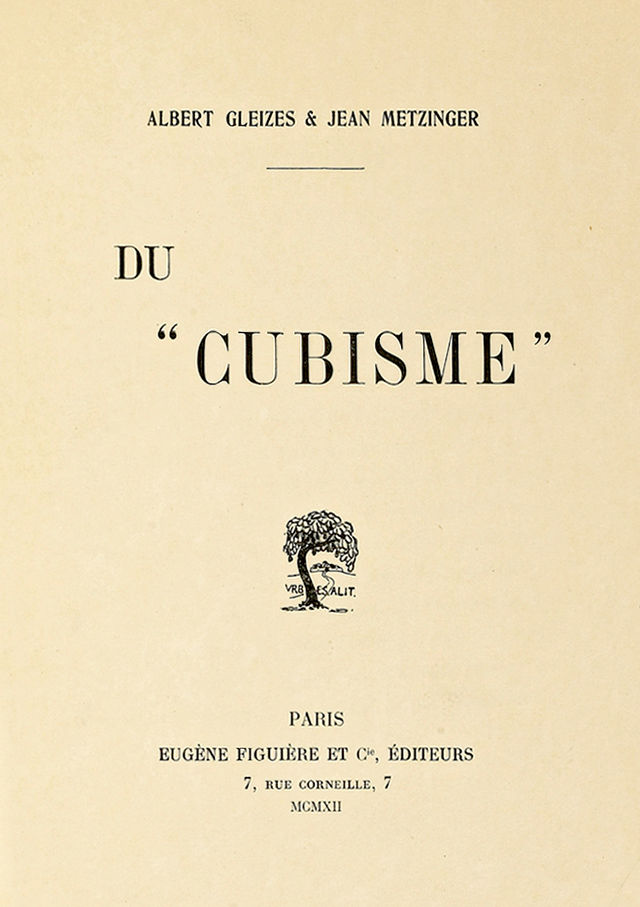
This book was the first major text to be written about Cubism. The publication of this book marked the formal introduction of Cubism to the world of art. It contained information about the movement and explains the principles and rules of Cubism, rejecting traditional perspective and breaking forms up into geometric shapes. The writers of this book, Albert Gleizes and Jean Metzinger, also spoke philosophically about the art movement and defended it against critics.
Jean Metzinger produced some great cubist artwork himself. These were some of his pieces:
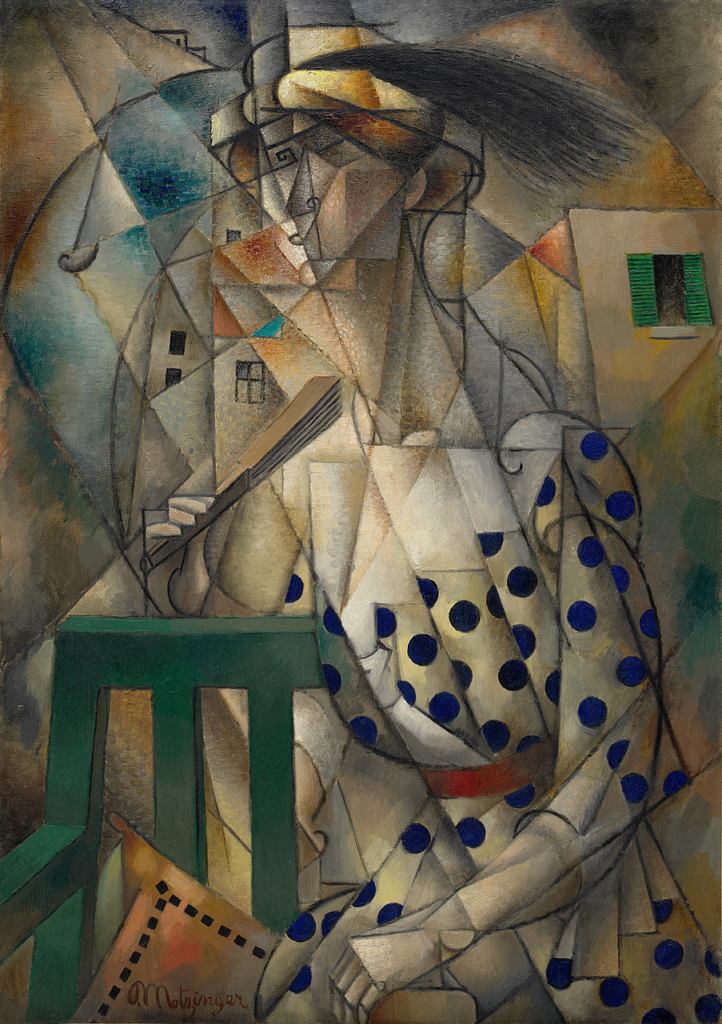


Juan Gris
Juan Gris was a Spanish artist who produced many Synthetic Cubism pieces. He was best known for creating his own distinct style of Synthetic Cubism, making his artwork stick out amongst others. Juan Gris helped to develop the style of Synthetic Cubism by using vibrant colours and larger shapes so that objects are clearer. Gris believed that Cubism should do more than just breaking objects apart and, rather, reconstructing them in a purposeful way.
These are some pieces by Juan Gris:



Cubism in Photography
Following cubist painters, photographers began to experiment with the styles. They would do this by capturing photographs of an object from different perspectives and combining the fragments into a shattered perspective. David Hockney was known to thoroughly explore cubism.

David Hockney was an artist from England who was a big contributor to the pop art movement and to Cubism. It wasn’t until 1980 that David Hockney began to experiment with photo collages. He referred to these as “joiners“. He would create these joiners using 35mm Polaroid prints which he would lay out on a surface to create a composite image. Hockney had originally created his first joiner by accident. This was a joiner of a living room and terrace in Los Angeles which he was painting. He created this joiner as experimentation as he didn’t like how wide angle lenses would distort images so he used polaroid prints and glued them together to see how it would look.
Below is the image which he created.

Hockney became fascinated by this concept so he, for some time, began to work more with photography than painting to develop more joiners. He was intrigued by the possibility of being able to showcase the essence of movement and space in a photograph, similar to how we perceive the world around us. A quote by David Hockney to suggest this is “The camera can’t see space. It sees surfaces. People see space, which is much more interesting.” This suggests that, by taking photographs from a variety of perspectives and combining them, it mirrors what we see as humans. Ultimately, it provides a sense of space in an image, and sometimes even movement. This relates to the principles of Cubism, breaking down the subject into multiple perspectives and then reassembling them to create a single result.
One of Hockney’s most influential joiners was “My Mother Sleeping, Los Angeles, 1982“.

This is a joiner by David Hockney of his mother sleeping. Many of Hockney’s joiners had a personal essence to them, displaying his most intimate relationships, his mother being one of the most significant figures in his work. This joiner looks as if it was shot using a combination of both artificial and natural lighting. From what I know about polaroid’s, I can determine that David Hockney most likely just had to adjust the exposure of his camera. It looks to me like he would have had it on a middle-to-low exposure. The fragments of images in this joiner go together to form his mother, with each of the images lining up perfectly. The colours in this image are mainly an orange/brown colour, however the blanket on his mother’s lap adds a pop of colour, bringing your attention to her. David Hockney has formed this joiner so that his mother’s face is in the middle, making her the clear subject. Furthermore, the arrangement of the polaroid prints create an abstract shape which is intriguing for the viewer and reflects his interest in form and space.
Sources
https://www.studiobinder.com/blog/what-is-cubism-definition
https://www.myartbroker.com/artist-pablo-picasso/articles/artists-who-inspired-pablo-picasso#
https://www.britannica.com/art/Cubism
https://www.history.com/topics/art-history/history-of-cubism
https://artsandculture.google.com/story/6-artists-who-made-cubism-popular/GwVh5Lg9G1yrJg?hl=en
https://sandrakontos.wordpress.com/2015/03/05/cubism-and-photography-more-than-squares/
https://www.pablopicasso.org/picasso-biography.jsp#google_vignette
https://www.biography.com/artists/pablo-picasso
https://www.theartstory.org/definition/analytic-cubism
https://www.britannica.com/biography/Georges-Braque
https://www.artsy.net/article/matthew-the-father-of-us-all
https://www.theartstory.org/artist/metzinger-jean
https://www.guggenheim.org/artwork/artist/jean-metzinger
https://www.britannica.com/biography/Juan-Gris
https://www.theartstory.org/artist/gris-juan
https://www.myartbroker.com/artist-david-hockney/articles/exploring-david-hockneys-joiners
https://en.wikipedia.org/wiki/David_Hockney
https://www.myartbroker.com/artist-david-hockney/10-facts/10-facts-about-hockney-photo-collages
